The Colossus Computer: History and Overview
Info: 9308 words (37 pages) Dissertation
Published: 10th Dec 2019
Report Title: The Colossus Computer
Table of Contents
Why the tunny was significant?
Introduction
World War II was one of the most important events in history. This war greatly advanced the development of Computers with each side of the war trying to be one step ahead of the other. One of the most important Computers during this period was the Colossus Computer which was made by the British and proved to be one of the deciding factors of the war. This paper will explore the life of the Colossus computer through its conception, why it was needed, how it worked, use in the war, destruction, and its restoration.
Bletchley Park
Although Bletchley Park was involved in the war, it was not a particularly military focused location (Paul Gannon, 2006, p.287). They were more similar to a university or a commercial research laboratory than a unit of the armed forces and the secret services. At Bletchley anyone could give suggestions on new techniques to be used and improvements to be implemented. Meetings were also held to discuss and solve problems with all members encouraged to contribute.
During the war, Bletchley Park was very noisy, with its machines working at full tilt. It was also similar to a research laboratory/non-teaching university, were rooms were filled with people working quietly away, giving full concentration to whatever problem they were solving (Paul Gannon, 2006, p.326).
Dollis Hill
Dollis Hill was created in 1933 as the Post Office Engineering Department Research Station headquarters (Copeland et al, 2006, p.281). At its peak, it was most likely the most active telecommunications research center in Europe, and helped Bletchley park by supplying machines used for cryptography.
Timeline of the Colossus
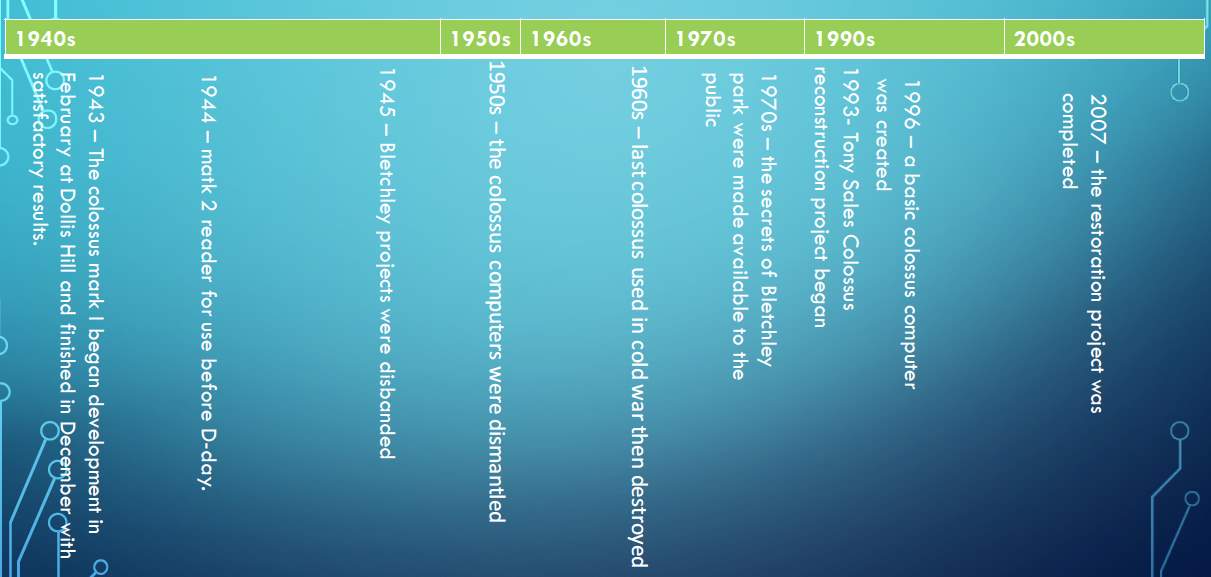
The Lorenz Machine
Lorenz Machine was a device that was attached to teleprinter, which enabled it to transfer encrypted messages to other teleprinters. It was based on the Vernam cipher which was created by Gilbert Vernam in 1917, while he was working at AT&T (Rosenberg, 2004).
This machine was nicknamed ‘the Tunny’ by the code breakers at Bletchley park with its coded messages called ‘fish’ (Copeland et al, 2006, p.37). The image below is a Lorenz machine located at Bletchley park:
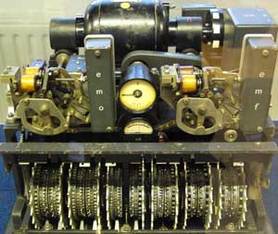
A Lorenz Machine (Wikipedia, 2017)
This machine worked by using a system of wheels where an operator would enter a character into the teleprinter’s keyboard, or a character would be read from a pre-punched tape in the case of an automatic transmission system, causing some or all of the wheels to move in reaction to the character typed (Copeland et al, 2006, p.37). An operator would type in a message using the teleprinter’s keyboard or the messaged would be made using a tape for auto-transmission, then a stream of pulses would be generated and sent through the teleprinter, were the message will be modified by a stream of obscuring characters known as a key, which will hide the meaning of the message to be sent. The message is then sent to a receiving teleprinter through radio transmitter. The receiving teleprinter will have to possess a key matching the one that was used by the sending teleprinter in order to decrypt the message. The resulting plaintext message generated was usually printed out on a sticky tape which the operator will stick onto strips of paper similar to a telegram.
Captain Jerry Roberts (2017, p.58), a cryptanalysis who worked at Bletchley Park during the war noted that the Lorenz machine was built in 1940, by the Lorenz Electrical Company which was mainly based in Berlin, under the instrutions of Adolf Hitler, the leader of the Nazi party. The earliest version of the Lorenz was called the SZ40 with ‘SZ’ which stands for ‘schlusselzusatz’ meaning ‘special attachment’ as they were attached to teleprinters. The German army began to use this machine from mid 1942, which allowed for secure communications between the German High command in Berlin and the armys High Commanders in different locations all over Europe. At the time, it was the most technologically advanced encryption device ever created even surpassing the Enigma computer which relied on the use of three wheels in its system as opposed to the Lorenz machine’s twelve wheels.
The Tunny links
The first radio link for the Lorenz was an experimental link between Berlin and Athens/Salonika, and was produce in June 1941(Copeland et al, 2006, p.40-42). The link was shut down in October 1942 leading the British to believe that the machine was no longer in use. Later in the same month, two new links appeared, one between Berlin and Salonika and the other between Konigsberg and South Russia.
By the time of the allied forces invasion of Germany in 1944, the Lorenz system had reached its largest state with 26 different links known to the British (Copeland et al, 2006, p.42). Each of the links was given a piscine name, e.g. Berlin-Paris was Jellyfish, Berlin-Rome was Bream, Berlin-CopenHagen was Turbot.
Two of the central exchanges for Lorenz traffic were near Strausberg for western links, and Konigsberg for the links to Russia (Copeland et al, 2006, p.42). In July of 1944 the Konigsberg exchange was shut down and a new point for eastern links was established in Golssen. Other fixed exchange points were located at large centers like Paris with the remaining links making use of a mobile system. Every mobile unit consisted of two trucks, one to carry the radio equipment which was kept some distance away from the teleprinter due to signal interferences. The other truck transported the teleprinter and two Lorenz machines, one to send messages, the other to receive messages. The truck with the teleprinter also carried a punching tape device for automatic transmission.
In situations where a landline was needed instead of a radio, the truck with the Lorenz machine was connected to a telephone system directly (Copeland et al, 2006, p.42). The only messages the British were able to intercept were those sent using a radio network.
Towards the end of the war, the tunny network became disorganized with the central exchange point moved from Berlin to Salzburg in Austria by the time the Germans surrendered (Copeland et al, 2006, p.42). The last Lorenz message was sent on the 8th of May 1945.
Why the tunny was significant?
At its peak near in 1944, near the end of the war, the messages decrypted from the Lorenz machines provided high quality intelligence containing top-level secrets (Roberts, 2017, p.59-60). Tens of thousands of encrypted messages were decrypted by the codebreakers at Bletchley Park. The messages were sent almost exclusively to the heads of large armies. Some of the people that signed messages using the system include:
- Field Marshal Keitel
- Field Marshal Jodl
- General Warlimont
- General von Rundstedt
- General Model
- General von Kluge
- General Field Marshal von Manstein
- Field Marshal Rommel
- Field Marshal Kesselring
- Adolf Hitler
With the Lorenz messages being decrypted, a large amount of messages could be read allowing the allied forces to know about the strategies of the Germans, which helped in many situations such as the Battle of Kursk in 1943, the clearing of the Italian peninsula in 1944 and the preparation for the D-day landings which General Eisenhower commented could have resulted in a delay by two years (Roberts, 2017, p.61).
The first Lorenz Intercepts
The first known recognition of the Lorenz messages was in early 1940, when a group of policemen on the south coast were using their radio equipment to listen for German spy transmissions within the UK (Rojas and Hashagen,2000, p.352). This was the point the Term Fish was adapted by Bletchley park to refer to these messages.
John Tiltman
John Tiltman, was one of the top codebreakers at Bletchley park. He developed an interest in the Messages generated by the Germans and began working on ways to decipherer them. Below is an image of John Tiltman.

John Tiltman (NSA, 2017)
John Tiltman recognized that the Vernam cipher system was being used to encrypt the messages and reasoned that since the Vernam system worked by introducing additional characters into the message to encrypt it, if the operator of the system were to make a mistake and sends two messages without resetting the system, he would be able to deduce the method the Germans where using to encrypt the messages (Roberts, 2017, p.70).
The Operators Mistake
Once the Lorenz machine was discovered, many messages were intercepted by Bletchley park, which was headed by Major Ralph Tester at the time (Rojas and Hashagen,2000, p.352). However, these messages could not be decrypted and thus the British could not actually read the intercepted messages.
A critical event in codebreaking history took place on the 30th of August 1941 (Roberts, 2017, p.71). A German radio officer in Athens sent a message that was about 4000 characters long to a receiving operator in Salzburg, Austria. The receiving operator was not satisfied with the transmitted message and requested that the sending operator transmit the message again. The sending operator managed to do this but made two errors while transmitting the message. First, the operator forgot to change the wheel settings for the machine, putting the wheel back to the position that was just used in the failed transmission. The second was by abbreviating some German words which the operator had not done in the first transmission.
The message began with the popular German phrase SPRUCHNUMMER MEANING “message number” in the English language (Rojas and Hashagen,2000, p.352). In the first message the operator keyed in S P R U C H N U M M E R. In the second message the operator keyed in S P R U C H N R, the NR in this case standing for NUMMER. This meant that after the N the two texts where different but the same obscuring sequence was generated by the two machines. Thus the cipher texts were different from that point on.
The interceptors at Knockholt in Kent knew at once the importance of these messages and sent them over to John Tiltman at Bletchley Park (Rojas and Hashagen,2000, p.353). Tiltman was able to gain more information than he ever had before on the encryption technique use by the Germans and was able to recreate the original message. By doing this he was able to reveal the obscuring character sequence that was used by the Lorenz machine.
William Thomas Bill Tutte
In 1941, at the peak of World War II, Bill Tutte an extremely talented mathematician was recommended to Bletchley park by his tutor Patrick Duff. This was after his first interview with the renowned Alan Turing where he was not accepted for the work (Roberts, 2017, p.70). He was later on interviewed by Colonel Tilt man who recognized his potential and accepted him into Bletchley park. Below is a picture of Bill Tutte: –
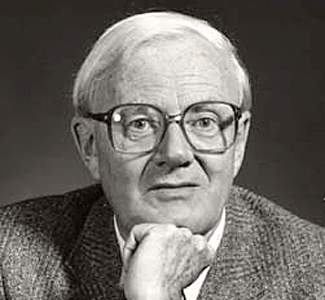
Image of Bill Tutte (IDG connect, 2017)6
Although John Tiltman was able to work out how to decipher the Lorenz messages, He was unable to figure out how the Lorenz Machine worked (Roberts, 2017, p.71). This duty was passed on to Bill Tutte who at the time was a 20-year-old graduate of mathematics.
In January 1942, Bill Tutte managed to deduce how the Lorenz machine work using the characters found in previous messages, and did so singlehandedly (Copeland et al, 2006, p.50). He focused on just one out of the five impulses of the key-stream used to encrypt the messages. Tutte concluded that this impulse was the product of adding two streams of dots and crosses. These streams where created by a pair of wheels which he named ‘chi’ and ‘psi’. The chi-wheel allowed for forward movement one position from one letter of text to the next, while the psi-wheel sometimes moved forward and sometimes stayed still. More people joined the research at this point and soon the whole machines process was understood without actually seeing the machine, which they were still calling Tunny at this point. Tutte laid the groundwork which would lead to the creation of the colossus by Tommy Flowers.
Wrens (Women’s Royal Naval Service)
Although there were many groups comprised at Bletchley Park such as the security troops, cleaners, general workmen, maintenance engineers, caterers and so on-all machine work at Bletchley was mainly divided between two groups of people, the cryptographers who were mostly men, and the machine operators which comprise of Wren member consisting of only women (Paul Gannon, 2006, p.327-328). The Wrens had a lot of jobs offered to them during the war but at Bletchley they were adept at running the Colossus and other machines and interpreting the results.
At a point after the Wrens were given sufficient training they were take on some of the tasks that were given to the codebreakers e.g. determining what tests need to be ran (Paul Gannon, 2006, p.343-344).
Max Newman
In the Spring of 1992, Max Newman, a mathematician at St John’s College in Cambridge received a letter from Sir Frank Ezra Adcock about joining the British government’s war efforts (Copeland et al, 2006, p.180). Newman wrote back showing interest in joining the war effort but expressing some concerns about his German Heritage affecting his eligibility. By July, Max Newman received a letter from Bletchley Park confirming that his German Heritage would not be a factor against his employment, with an offer of employment as a Temporary Senior Assistant. Below is an image of Max Newman: –
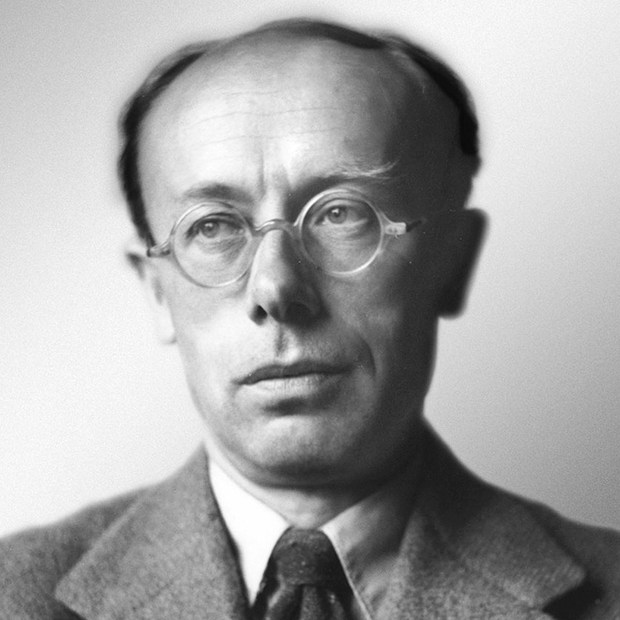
Image of Max Newman (Alchetron, 2017) 7
At Bletchley Park two groups where competing for Max Newman’s services (Copeland et al, 2006, p.181). The first was John Tiltman’s group, working on the Tunny. The second was Peter Luca’s Enigma intelligence section. After receiving a letter from Lucas detailing life of working in the intelligence section and some of its drawbacks, Newman decided to ask for a leave of absence from his job at St John’s, and accepted John Tiltman’s offer, officially starting work on 31 August 1942.
Max initially worked on decrypting messages from the Tunny along with Tutte and others (Copeland et al, 2006, p.181-182). However, he soon found the work frustrating, leaving him feeling ineffective up to the point of him returning back to St John’s. It was during this period that Max Newman came up with the idea of mechanizing Tutte’s code breaking method by using high-speed electronic counters.
He took his idea to Bletchley Park’s management, and in December 1942, he was put in charge of developing the machine at Dollis hill (Rojas and Hashagen,2000, p.354). The machine was called the Heath Robinson, named after William Heath Robinson, a cartoonist known for designing complicated machines.
The Robinson relied on the use of two paper tapes, one tape punched the wheel patterns of the Lorenz Machine while the other the the enciphered message (Rojas and Hashagen,2000, p.354). The Robinson worked well in proving Newman’s concept, but however, there was a problem with the machine occasionally ripping the punched papers tapes due to the speed that the papers were moved (Smith, 2011, p.228). it was at this point that Alan Turing, recommended that Newman meet with Tommy Flowers, a brilliant Post Office electronics Engineer that worked at Dollis Hill. He reasoned that he would be the man that might get the Robinson to work.
Tommy Flowers proposed that the wheel patterns in the system be generated electronically in the ring circuits, removing the problem of synchronization (Rojas and Hashagen,2000, p.354). Doing this would require a massive amount of valves but Tommy believed that this would work due to his previous experience using vales at Post Office. He knew that valves would be very reliable as long as they are never switched on and off.
The design for the colossus computer started in March 1943 (Rojas and Hashagen,2000, p.355). By December of 1943, all the circuits for the Colossus Mark I were working with the use of 1500 valves. The system was then dismantled and shipped over from Dollis Hill over to Bletchley Park where it was reassembled in Block F over the Christmas period of 1943. The Mark I was operational in January 1944 and successfully deciphered its first real message.
Tommy Flowers
Below is an image of Tommy Flowers
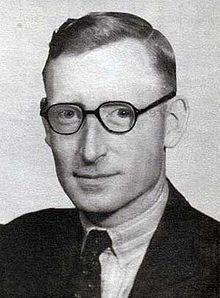
Tommy Flowers (Wikipedia 2017)11
Tommy Flowers joined the Telephone branch of the Post Office in 1926, after he had an apprenticeship at the Royal Arsenal in Woolwich, well known for its precision engineering (Copeland et al, 2006, p.71). He entered the research branch at Dollis Hill in 1930, achieving rapid promotion and establishing his reputation as a gifted and innovative electrical engineer. At the outbreak of the war he headed the switching group at Dollis Hill.
During the 1930s Flowers pioneered the large scale use of electronic valves to control the making and breaking of telephone connections (Copeland et al, 2006, p.72). we he explored this area, he was discouraged as the idea of using large-scale electronic equipment was regarded with skepticism by many at the time. The common though was that valves which like light bulbs contained filaments which were unreliable and could not be used in large numbers as too many would fail. However, Tommy had experience switching these equipment on and off frequently, such as radio receivers, radars and other similar devices. Flowers realized that as long as the valves are switched on and left on, the could operate reliable for very long periods. Especially if their heater were run at a reduced current. Once switched on the Colossus was never switched off until after the end of the war.
At the time telephone switchboard equipment was based on the relay (Copeland et al, 2006, p.72). A relay is an automatic switch that contains a mechanical breaker, which was a moving metal rod that opens and closes and electrical circuit. The rod is moved from the ‘off’ position to the ‘on’ position by the magnetic field. A current in the coil is used to produce the magnetic field; as soon as the current flows the field moves the rod. When the current ceases, a spring pushes the rod back to the ‘off’ position. Flowers recognized that electronic valves, whose only moving part is a beam of electrons, were not only potentially very much faster than relays but also not prone to mechanical wear, would be actually more reliable.
By the time of the outbreak of the war with Germany, only a small number of electronical engineers were familiar with the use of valves as high-speed digital switches (Copeland et al, 2006, p.73). Thanks to his pre-war research, Flowers was possible the only person in Britain who realized that valves could be used for large scale high-speed digital computing. When Flowers was brought to Bletchley Park, due to his knowledge with relays, he turned out to be the right man at the right place at the right time. This was due to Turing recommending that Tommy flowers help with their ongoing project the Health Robinson.
After Tommy Flowers saw the Health Robinson system, he did not have much to say as the development of that system and been proceeding long before he was called in and the basic idea was already settled (Copeland et al, 2006, p.146). He believed that it would be difficult for the Health Robinson to keep two paper tapes in synchronization at high speeds and considered this a weakness. The Robinson was built mainly from relays with a couple dozen valves. Flowers doubted that the machine would work properly and devised an alternative machine to do the task. This machine would be known as the Colossus.
Colossus Computer
Below is an image of the Colossus Computer
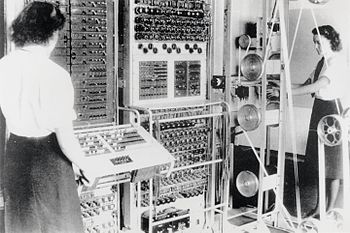
The Colossus operated by Wren members (Wikipedia 2017)12
Flowers suggestion did not initially go well with the engineers at Bletchley Park (Copeland et al, 2006, p.74). It was thought that Tommy Flowers idea of using over two thousand valves for the new system would be too unreliable for useful work. There was also the question of how long the development process would take s it was thought that the war would be over before the machine is completed. Newman offered his support and left Flowers to do as he wanted the the making of the system at Dollies Hill. This was due to the support Flowers was able to get from the Director of Dollis Hill Research Station Gordon Radley.
One of the most notable people to disagree with Flowers work at the time was Dr Wynn Williams (Paul Gannon, 2006, p.252-253). He believed that Flowers’ was not a man that liked co-operating with others and is too inflexible when it comes to listening to ideas that are not his own. He also believed that although Tommy may be very good at his ordinary work, he fails to understand the complications of the work done at Bletchley Park and is not very good with electronics. He even went as far as to try and get Flowers and Radley reprimanded for excessive use of valves. Nothing however came of this as Flowers was still allowed to continue with his work.
The prototype of the Colossus was brought to Bletchley Park in lorries and reassembled by Flowers’ engineers (Copeland et al, 2006, p.74). It had approximately 1600 electronic valves and operated at 5000 characters per second. The later models containing approximately 2400 valves, processed five streams of dot-and-cross simultaneously in parallel. This boosted the speed to 25000 characters per second. The Colossus generated the chi-stream electronically. Only one tape was required, containing the cipertext, by doing this the synchronization problem was solved.
The advantage the Colossus had on the Robinson was not only was it superior in speed and had an absence of synchronized tapes, but it also had greater reliability due to Flowers using valves for the system over relays (Copeland et al, 2006, p.75).
In March 1944 the authorities demanded four more Colossi. By April they were demanding twelve (Copeland et al, 2006, p.76). This put a lot of pressure on Flowers to deliver these new machines quickly. The orders were given from the highest level, which were the war cabinet, and he cause consternation when he said it would be impossible to produce more than one new machine by 1 June 1944.
Flowers was able to produce the Colossus due to most of his staff doing nothing but work, eat, sleep for weeks and months on end (Copeland et al, 2006, p.76). He would need greater production capabilities and proposed to take over a Post Office Factory in Birmingham. Final assembly and testing would be done his Dollis Hill Laboratory. Flowers estimated that once the factory was ready he would be able to produce one Colossus per month.
By means of re-pluggable cables and panel off switches, Flowers deliberately built more flexibility than he needed to into the logic units of the prototype Colossus (Copeland et al, 2006, p.76). As a result, new methods could be implemented into the Colossus. Flowers was instructed to incorporate a special panel for breaking wheel patterns in the Colossus Mark II.
The Colossus Mark II was shipped from Dollis Hill to Bletchley Park on 4 May 1944 (Copeland et al, 2006, p.76). The plan was to assemble and test the machine at Bletchley Park rather than Dollis Hill to save precious time. Promised by the 1 June the Colossus was still not working properly as the final hours of May ticked past. The Computer was plagued with faults and Flowers struggled to find the Problem. Flowers took a few hours’ rest and returned to find the computer functioning properly. There was a problem of parasitic oscillations in some of the valves which was solved by wiring a few more resistors to the system. There however was a leak from a radiator pipe making the members of Wren operating the machine wear gumboots to insulate themselves.
Significant feature of the colossus include (Copeland et al, 2006, p.148):
- Binary electronic circuitry on a large scale. This contributed to the reliability of the Colossus since (except in the tape reader photo amplifiers) all valves were either cut-off or conducting (representing 0 or 1, respectively).
- A clock pulse that synchronized and timed operations throughout the machine. It was this feature which made the size of the machine possible, eliminating cumulative timing errors.
- A five step shift register.
- Two-state circuits and clock control meant that the machine could operate at the speed down to zero, except for the photocell amplifiers. In consequence the Colossus could be ’hand-stepped’ for test purposes.
- The operation of the switching circuits was isolated from the output by the use of ‘cathode flowers’.
The Colossus Mark II involved intensive redesigning, although Flowers’ basic ideas for the logic and the circuit technology remained in place (Copeland et al, 2006, p.147). An additional counter was added, more use was made of the shift registers, and a number of detailed modifications were made to the original circulatory.
Production of the Colossus took up half of the total workshop and production capability at Dollies Hill (Copeland et al, 2006, p.148). Construction of the electric panels for the first two or three machines was undertaking by a staff of wiring men there, but subsequently the panels were built at the Post Office factory in Birmingham. Frames on which the tape pulleys were mounted i.e. the bedsteads, were built by the Dollis Hill workshops. The racks on which the electric panels were installed were standard ones from Post Office stores. Racks were wired for the first time at Bletchley Park, an operation which would take two or three weeks, there being a large amount of inter-rack wiring.
Eventually, Allen Coombs was placed in charge of the work in 1944, when Flowers was promoted and ceased full-time involvement, he still continued to report to him (Copeland et al, 2006, p.148). Flower became involve with the telephone work that would be carried out once the war had ended.
By the end of 1944 seven Colossus computers were operational (Copeland et al, 2006, p.77). The tenth Colossus was installed in April 1945 and near the date for the Germans official surrender in May, an eleventh Colossus in development.
All ten Colossi where kept in a large room at Block F or H at Bletchley Park (Rojas and Hashagen,2000, p.355). All racks were 90 inches high and of various widths. There were 8 racks arranged in two bays of about 16ft long plus the paper tape reader and the tape handler also known as the bedstead.
The Front Bay of the racks which was spaced 5ft from the rear bay comprised from left to right, the J rack holding the master control panel, the plugboard, some cathode followers and the AND gates (Rojas and Hashagen,2000, p.355). Next was the K rack which contained the very large main switch panel together with the very distinctive sloping panel at the front which was a duplicate patch panel for the thyratron rings. Next was the S rack which held the relays used for buffering counter output and making up the typewriter drive logic. The left-hand rack at the front was the C rack which held the counter control logic on the front and the decade counters on the back.
Below is a picture of the racks in the colossus
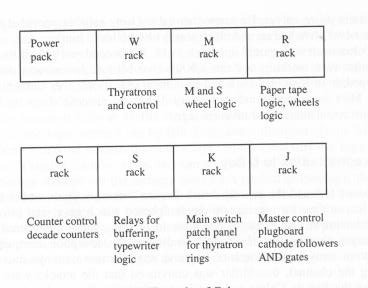
racks of the colossus (cultureandcommunication, 2017)14
The rear bay of the Colossus contained four racks, the R rack which held the staticizer and the delta boards for the paper tape reader output and the K and S wheel thyratron ring outputs, the M rack for the M wheel staticizers and the S wheel motion Logic (Rojas and Hashagen,2000, p.356). The large W rack held on one side al the thyratrons making up the wheel rings, which were 501 in total, and on the other side the 12 thyrathron ring control panels. The W rack also had linked boards for the wheel patterns and the uniselectors for setting wheel start positions. The end rack at the back of the bay held the power packs which were 50 volt Westat units stacked up in series to give +200 volts to -150 volts. The total power used was around 5 Kilowatts with most of it coming from the heaters for the valve.
The circuit layout was all the surface mounting on metal plates bolted to the racks. The valve holders were the surface mounting with tag strips for the components (Rojas and Hashagen,2000, p.356). This form of construction allowed both sides of a rack to be used and made wiring and maintaining the colossi easy. It also made the cooling of the valves more effective due to them being horizontal.
How the Colossus worked
The structure and capabilities of the Colossus (Rojas and Hashagen,2000, p.357): –
Input: Cipher text punched onto 5-hole paper tape read at 5000 cps.
Output: Buffered onto relays through a typewriter.
Processor: Memory of the 5 characters of 5-bits held in a shift register, pluggable logic gates, 20 decade counters arranged as 5 by 4 decades.
Clock speed: 5KHz, derived from sprocket holes in the input tape.
Valves: 2500
The Colossus read characters from a teleprinter in the international Baudot Code at 5000 characters per second from a paper tape (Rojas and Hashagen,2000, p.357). These characters were usually the norm for intercepted text that had been sent through the radio. The paper tape was joined into a loop with special punched holes at the beginning and the end of the text.
The Colossus was able to able to count throughout the length of the text the number of times that a complicated Boolean function between the text and the generated wheel patterns had either a true or false result (Rojas and Hashagen,2000, p.357). At the end of the text the count left on the counter circuits was dumped onto relays before being printed on the typewriter during the next read through the text, an early form of double buffering.
The Colossus had two cycles of operation (Rojas and Hashagen,2000, p.357). The first one was controlled by the optical reading sprockets holes punched between tracks 2 and 3 on the paper tape. The sprocket signal was standardized to 40 microseconds wide. The optical data from the paper tape was sampled on the back edge of the standardized sprocket pulse as were the outputs from the rings of thyratrons representing the Lorenz wheel patterns. The result of the logical calculation was sampled on the leading edge for feeding into counter circuits.
The second cycle of operations occurred at the beginning and the end of the text punched onto the paper tape (Rojas and Hashagen,2000, p.357). The paper tape was joined into a loop and special holes were punched just before the start of the text between channels three and four (called the start) and just after the end of text between channels four and five (called the stop). This long cycle of operations began with the electrical signal from from the photocell reading the stop hole on the tape. This stop pulse set a bistable circuit which stayed set until the optical signal from the start hole was read. The setting of this bistable thus lasted for the duration of the blank tape where the text was joined into a loop, typically about 100 milliseconds. The first operation after the stop pulse was to release any settings on the relays from the previous count. Next the new count was read onto the relays. Then the counters and the thyratron rings were cleared and then the thyratron rings, to sample the data read from the paper tape and to sample the calculation output to go to the counters.
The various components of Colossus were the optical reader system, the master control panel, the thyratron rings and their driver circuits, the optical data staticizers and delta calculators, the shift registers, the logic gates, the counters and their control circuits, the span counters, the relay buffer store and printer logic (Rojas and Hashagen,2000, p.357-358).
The optical reader system
The cypher text had to be scanned repeatedly at high speed in order to break the Lorenz codes (Rojas and Hashagen,2000, p.358). This meant at least 5000 characters per second and in 1942 this implied hard vacuum photocell to optically read the holes in the paper tape. The smallest photocells available were some developed for proximity fuses in anti-aircraft shells. Six of these in a row meant an optical projection system to enlarge the image of the paper tape about 10 times. Dr Arnold Lynch designed the paper tape reader and used slits cut into black card to form a mask in front of the photocells. The output from the data channels went to the staticizer and delta circuits.
The master control panel
This was where the start and stop pulses from the optical reader set and reset the bistable (Rojas and Hashagen,2000, p.358). Monostable delay circuits generated the voltage waveforms for releasing the relays, for staticizing the counters, for resetting the counters and thyratron rings, and for striking the rings. Gate circuits controlled the flow of the sprocket pulses.
The thyratron rings and their driver circuits
These circuits were the most complex on Colossus. Thyratrons are the gas filled triodes which strike a discharge arc between anode and cathode when the grid voltage is raised to allow electrons to flow. This discharge, when struck, continues quite independent of the grid voltage. Thus the thyratron acts as a one-bit store. It can only be switched off by driving both anode and the grid negative with respect to the cathode. To construct a shift register with thyratrons requires that the striking of the next thyratron in the ring also quenches the previous thyratron. This leads to a biphase circuit with anodes of alternate thyratrons connected together and the grid voltage partially biased by the cathode voltage of the previous thyratrons.
Below is a block diagram of the colossus
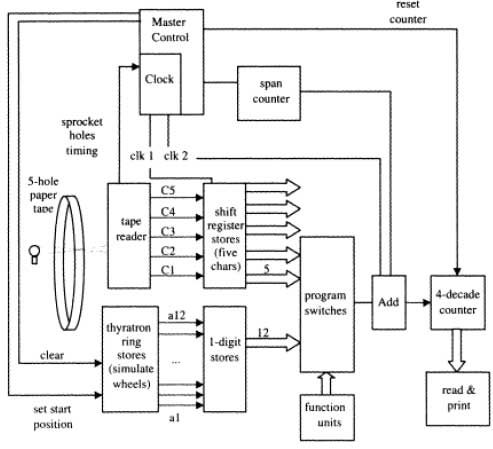
block diagram of the colossus (history-computer, 2017)13
The complication arises when a Lorenz wheel contains an odd number of setting lugs (Rojas and Hashagen,2000, p.359). The thyratron ring controller for this requires a complete set of circuits to handle just the odd thyratron in order to get back to the biphase circuits fo the rest of the ring. The thyratrons in a ring conduct sequentially stepped round by the sprockets pulses. Each thyratron cathode is brought out to a patch panel which allows the cathode pulse to be connected to a common output line when a link is plugged into the patchboard. Thus as the ring processes round, a sequence of pulses appears on the common output line. By selecting the link positions this sequence can replicate the mechanical lugs set on the Lorenz Wheel. Alongside the patch panel is a Uniselector which selects the thyratron cathode to which the ring strike pulse goes. This is the start position of the ring when sprocket pulses come in at the start of text.
The staticizers and the delta circuits
These circuits took raw signals from the paper tape reader and the thyratron rings, samples them on the back edge of the clock pulse and set them to the standard voltages of the plus or minus 80 volt. Also on these boards are the circuits giving a delay of one clock pulse. This was achieved with the integrator capacitors which held the previous data signal long enough for it to be sampled on the next sprocket pulse. This delayed signal is available as an output but also on the board is an adder circuit which produces the delta signal, i.e., a one when current data is different from the previous and z zero when current equals previous.
The shift registers
These are the same circuits used on the delta boards, just integrators sampled on the next sprocket pulse (Rojas and Hashagen,2000, p.360). Up to 5 shift elements could be connected in cascade giving a 5-bit shift register. This is thought to be the first recorded design or the use of a shift register. Some of the computational algorithms used this window on the previous data to improve the cross correlation measurement.
The Logic gates
The Colossus was provided with AND and OR gates which could be plugged together in any combination (Rojas and Hashagen,2000, p.360).
The counter and the counter control
The decade counter circuits were based on a pre-war design by Wynn Williams (Rojas and Hashagen,2000, p.360). They used a divide by two circuits followed by a ring of five pentodes. Four decades were required for each of the five counters used and each control circuit covered four decades of counters. The inputs to the control circuit were the output from the logic gates, the sprocket pulse for the strobing and the reset pulse from the master control panel. The control panels were comparison circuits between the outputs of the decade counters and the switches on another panel. These switches could be set to any number in the range 0 to 9999. The output of the comparison could be included in the logic calculations thus for the instance suppressing printing of the scores below a set value.
The span counters
These were the same designs of counters and counter control circuits with switches on another panel which could be set in the range 0 to 9999 (Rojas and Hashagen,2000, p.361). The purpose of the span counters was to be able to ignore sections of the cipher text which were corrupted, possibly due to fading radio signals. The Comparison output was used to gate the sprocket pulses which went to the main counter controllers, cutting off these pulses stopped the sampling of the logic calculation and thus ignored the section of text covered by the span counters.
The relay buffer store and printer logic
Latching relays held the ending count on the decade counters (Rojas and Hashagen,2000, p.361). The start position s of the thyrathron rings and the count for the previous run through the text are clocked out sequentially onto the typewriter by the printer relay and uniselector logic.
Programming the Colossus
The programming of the Colossus was done with a combination of telephone jack plug, cords, and switches (Rojas and Hashagen,2000, p.361). The main plug panel was on the rack nearest to the paper tape reader. The direct and delta signals from the paper tape read and the K wheel thyratron rings were on this panel. The changeover from direct to delta could also be obtained through switches. On the main plug panel were the input and output sockets for the AND gates and the so-called “Q” sockets which took the calculated output to the main switch panel on the next rack to the left. This large switch panel allowed signals to be combined through the further logic gates and the results switched to any of the five result counters.
How long did it take to break a message by hand or machine?
According to Captain Jerry Roberts (2017, p124-125), there is a lot of misconception on how long it took to break a message with the Colossus compared to the hand method. They would say that once the Colossus was brought in it would do the entire decryption process without any need for human codebreakers. Tony Sale, another member of Bletchley Park would say that it took around four to six days to break a single message while others believed it took four to six weeks.
The truth was that during the last years of the war, with the assistance of machines Robert was able to break about seven to twelve messages a day (Roberts, 2017, p.125). the machine was able to produce a de-chi between three to eight hours which was faster than by hand. This is also confirmed by Jack Copeland the writer of the Colossus book who said that majority of the messages were broken between two and six hours. If the message took weeks to decode it would have been useless to the war efforts.
D-Day
Before D-Day, Adolf Hitler had Gathered the main Bulk of His troops to Pas-de-Calais, located north of the actual Allied landings in Normandy (Roberts, 2017, p.130). This was due to misinformation that was spread through the German forces by the British, making Hitler Believe that the attack will come from the Calais region. The British were able to do this by mooring manufactured planes that resembled landing crafts on the coast of Kent and Essex, giving the impression that they would attack the Calais region. This would mean that Normandy would have less defenses and would be more susceptible to attacks. This was possible due to Hitler not knowing that their messages were being intercepted. It was crucial for the allies to know if the tactic had succeeded in order to know if the D-Day mission would be successful. This is where the colossus came into play.
The 1st of June 1944 was originally meant to have been D-Day (Copeland et al, 2006, p.80). By this point the Mark II of the colossus had been in development for 4 straight months and was just barely finished in the early hours of June 1st. General Eisenhower required that the event be delayed 3 days due to bad weather. On the 5th of June, a courier arrived from Bletchley Park interrupting a conference between Eisenhower and his staff. The courier gave the general a piece of paper containing information gotten from a deciphered message sent from Hitler. Hitler had told Field Marshal Rommel that an attack on Normandy was inevitable but it would not be the real invasion, it would be a diversion to draw troops away from channel ports, which is where the real invasion will take place. He believed that all he had to do was wait for the real attack, which would be expected five days after the Normandy invasion. He handed the paper back to the courier and decided that they would attack the next day.
Hitler eventually realized that the Normandy was actually the real attack and took command of the situation himself (Copeland et al, 2006, p.81). He attempted to use his forces in north-west Europe to drive the invaders back, this strategy might have been successful had the Germans not communicated through radio, which was being monitored by Bletchley park, leading to a massive defeat for the Germans.
The war continued for another year, within this time number of colossus machines developed rose to 10 (Copeland et al, 2006, p.81). These continued to supply the allies with important information up to the end of the war. When Eisenhower would later be asked years later to give his assessment of the Bletchley Park operations during the war, he said that, without the information Bletchley Park supplied, the war would have ended up 2 years longer than it ending up being. This would have led to many more countries being occupied by the Germans leading to the deaths of hundreds of thousands.
Tommy Flowers Cost
The development of the Colossus was not kind to Flowers however, as the personal cost he incurred had left his bank account over drawn (Copeland et al, 2006, p.77). Newman was offered an OBE for his contribution to the defeat of Germany but turned it down remarking to his ex-colleagues that the offer was derisory. Tutte also received no public recognition for his vital work.
Tommy Flowers was given an Award to Inventors of 1000 pounds, which would not even cover the cost he paid from his own pocket (Paul Gannon, 2006, p.445).
The End of the Colossus
After the Germans formally surrendered to the allies on 8th May 1945, also known as V day, under the orders of Churchill eight out of the 10 Colossi were dismantled at Bletchley park (Rojas and Hashagen,2000, p.362). The remaining two Colossi were moved to Eastcote in North London and eventually to GCHQ at Cheltenham. These were then dismantled in 1960 with all the drawings relating to the Colossus burnt, and the very idea of the systems existence kept secret.
In the 1970s information on the Colossus began emerge (Rojas and Hashagen,2000, p.362. Professor Brian Randell of the Newcastle University started his research on the machine with Tommy Flowers and other design engineers handing in any papers they possessed describing the Colossus in general terms.
Rebuild Project
Below is an image of Tony Sale: –
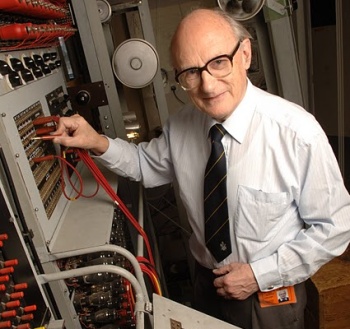
Image of Tony Sale (Wikipedia, 2017) 9
The Start
In 1991, Tony Sale and a few of his colleagues began a campaign to save Bletchley Park from being demolished by property workers (Copeland et al, 2006, p.150). During that time, he was working at the Science Museum in London restoring some early British computers back into working condition. He proposed the idea to rebuild the Colossus but unfortunately nobody believed it could be done.
In 1993, Tony Sale gathered all information available on the Colossus, which amounted to eight wartime pictures of the computer from 1945 (Copeland et al, 2006, p.150). He also possessed brief descriptions of the machine and crucial circuit diagrams by Tommy Flowers and other engineers, who had kept them even under orders to destroy them.
Tony spent about nine months looking over the wartime photos, before transferring 3D projections into a modern Computer Aided design system on his personal computer, to recreate the machine drawings of the racks since all drawing of the machine were burnt (Tony Sale, 2014, p.13). He found that wartime valves were still available, as well as other pieces of post office equipment used in the construction of the Colossus (Copeland et al, 2006, p.150).
In July 1994, his Royal Highness the duke of Kent opened Bletchley park Museum and inaugurated the Colossus rebuild project (Copeland et al, 2006, p.151). Before this point Tony had failed to get any sponsorship for the rebuild project and had to used his and his wife’s money to get it started, feeling that if they didn’t start the process nobody would do it. Over the upcoming years private sponsors came to the aid of the project and more current and retired Post Office and radio engineers should up to offer their services and help the rebuild project.
In 1955, the American National Security Agency released about 5000 world war 2documents into the US National Archive due to the Freedom of Information Act, with some of these documents released onto the internet (Copeland et al, 2006, p.151). Tony Sale was able to find some reports by American who had gone to Bletchley Park once America had Officially entered the war. He was eventually access to the ‘General Report on Tunny’ which was still Classified at the time. With this information, Tony and his team were able to work out the functions of many circuits and program switches in the colossus.
Tony later on got help from Dr Arnold Lynch, who had designed the optical tape reader in 1942 (Copeland et al, 2006, p.151). By 1995, the tape reader was working with some basic circuitry (switch supported two channels out of five from the paper tape) of the Colossus recreated.
The switch on
On June 6 1996, the Duke of Kent returned to Bletchley Park to officially switch on the first stage of the rebuild (Copeland et al, 2006, p.151). Many people that had previously worked in Bletchley park and shown up for the occasion including Tommy Flowers. One of the reasons for trying to get the colossus running in 1996 was to promote awareness of Tommy Flowers efforts to the history of computing by the 50th anniversary of the American ENIAC computer. Due to the secrecy of the Bletchley park projects, the Americans had gotten away with the idea that they had the first large scale electronic computer in the world.
Going for mark 2
After the 1996 demonstration, it was decided that a mark II version of the colossus would be built (Copeland et al, 2006, p.151-152). The development process took over 6000 man-days of effort and most of the work was finished by 2003in Block H, in the same location the original Colossus once stood.
In January 2004, the rebuild team decided to go all out to get the colossus complete by June 1st that year, which was the 60th anniversary of the day the Colossus Mark II first Ran (Copeland et al, 2006, p.152). On May 20, Tony Sale made a video stream showing the Colossus breaking a message. At this point the rebuilt Colossus was 90 done but not all components fully working yet.
The video Stream was shown to 120 people at the restoration projects commemoration event at the Science Museum at London on June 1st (Tony Sale)10. Over 30 of the people at this event where people that had previously worked at Bletchley during wartime. The video is current available on Tony Sales website.
Tony’s Colossus is currently on display at Bletchley attracting visitors, bringing income and also adding to the Park’s reputation (Roberts, 2017, p.178).
Below is an image of surviving Wren members next to the rebuilt Colossus:
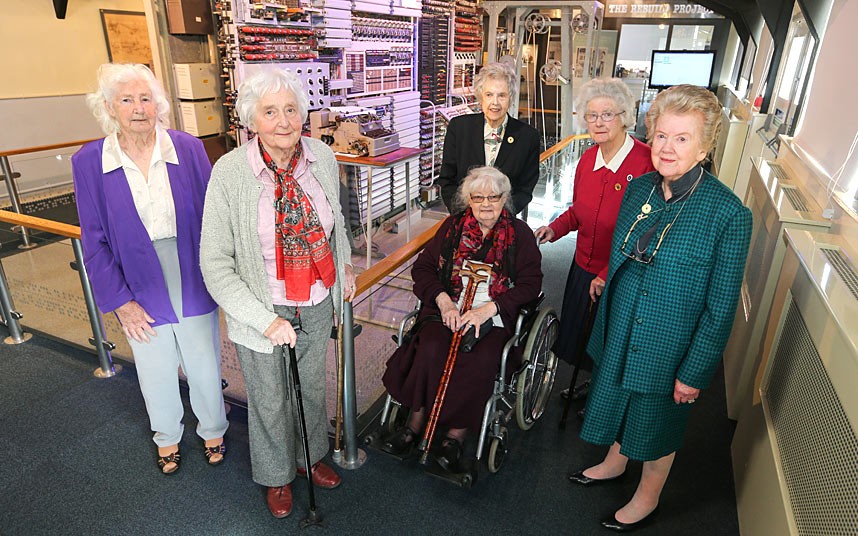
Surviving members of Wren next to the Colossus (Telegraph 2017)16
Legacy of the Colossus?
After Tommy Flowers left Bletchley park he returned back to his work at the Post Office in 1947 (Copeland et al, 2006, p.83). He believed that Due to the Colossus being kept secret years after the war had ended, Britain found itself lagging behind technologically to other countries. He believed that after he had returned to the Post Office, more people would have trusted him more when he proposed that telephone exchanges of the future would be done using an electronic medium. They eventually caved in but only after market pressure convinced them in 1956.
References
- Alchetron. (2017). Max Newman. Retrieved from https://alchetron.com/Max-Newman-1310520-W
- Codes and Ciphers. The Colossus Rebuild Project. Retrieved from https://www.codesandciphers.org.uk/lorenz/rebuild.htm
- Copeland, B. et al. (2006). Colossus: The secrets of Bletchley Park’s code-breaking computers. Oxford, New York: Oxford University Press.
- Culture and communication. (2017). Colossus Computer. Retrieved from http://cultureandcommunication.org/deadmedia/index.php/Colossus_Computer
- Gannon, P. (2006). Colossus: Bletchley Park’s greatest secret. Bodmin, Cornwall: MPG Books Ltd.
- History-Computers. (2017). Retrieved from
- http://history-computer.com/ModernComputer/Electronic/Colossus.html
- IDG Connect. (2017) Forgotten tech father: Bill Tutte vs. Alan Turing? Retrieved from http://www.idgconnect.com/abstract/9465/forgotten-tech-father-bill-tutte-vs-alan-turing
- NSA. (2017). Cryptologic hall of fame. Retrieved from https://www.nsa.gov/about/cryptologic-heritage/historical-figures-publications/hall-of-honor/2004/jtiltman.shtml
- Robert, J. (2017). Lorenz:Breaking Hitlers top secret code at Bletchley park. Brimscombe port
- Stroud. Gloucestershire:The history press.
- Rojas, R., Hashagen, U. (2000). The first computers: history and architectures. Cambridge, Mass: MIT Press.
- The Telegraph. (2017). Female codebreakers reunited at Bletchley Park. Retrieved from http://www.telegraph.co.uk/history/world-war-two/10810980/Female-codebreakers-reunited-at-Bletchley-Park.html
- Wikipedia. (2017). Colossus. Retrieved from https://en.wikipedia.org/wiki/Colossus_computer
- Wikipedia. (2017). Lorenz cipher. Retrieved from https://en.wikipedia.org/wiki/Lorenz_cipher
- Wikipedia. (2017). Tommy Flowers. Retrieved from https://en.wikipedia.org/wiki/Tommy_Flowers
- Wikipedia. (2017). Tony Sale. Retrieved from https://en.wikipedia.org/wiki/Tony_Sale
Cite This Work
To export a reference to this article please select a referencing stye below:
Related Services
View allRelated Content
All TagsContent relating to: "Computing"
Computing is a term that describes the use of computers to process information. Key aspects of Computing are hardware, software, and processing through algorithms.
Related Articles
DMCA / Removal Request
If you are the original writer of this dissertation and no longer wish to have your work published on the UKDiss.com website then please:




